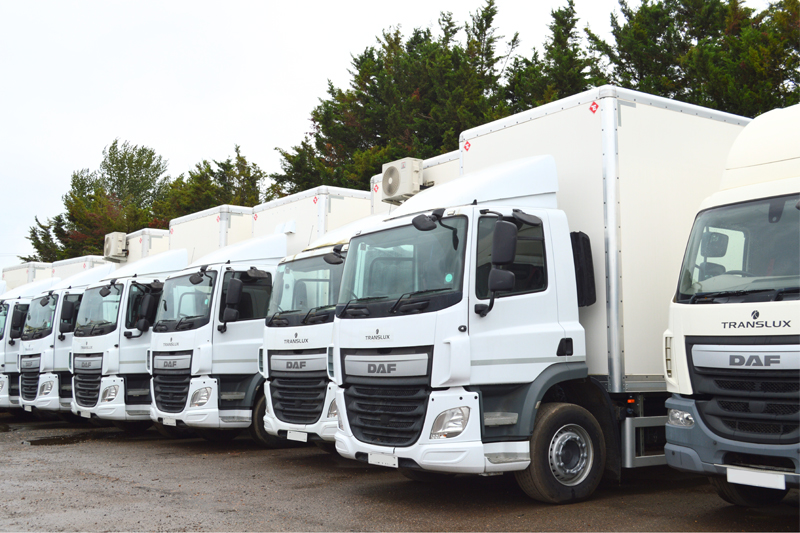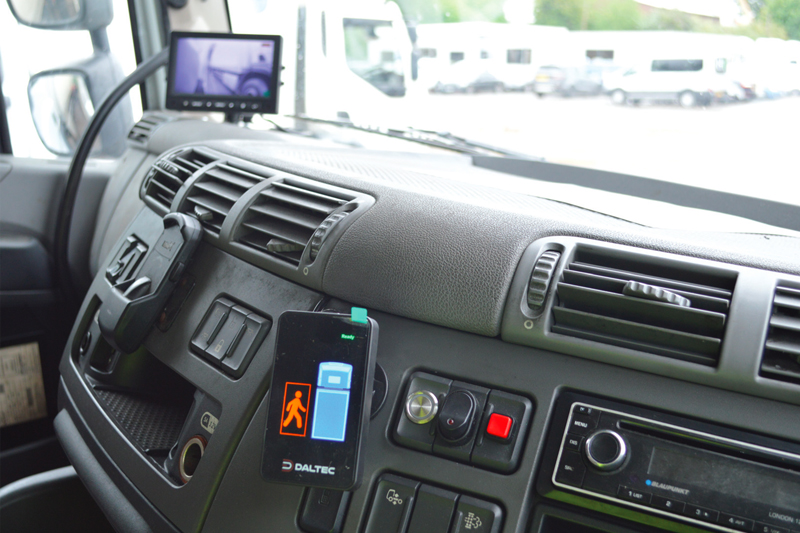How to comply with the Direct Vision Standard

As the fleet industry races toward compliance with the upcoming Phase 2 of the Direct Vision Standard (DVS), specialist companies like Daltec are stepping up to help operators meet these vital safety requirements. CVW reports.
The introduction of Phase 2 of the Direct Vision Standard (DVS) Progressive Safe System (PSS) on October 28th, 2024, has become a significant focus for the fleet industry. Companies are working to ensure their vehicles comply with the updated requirements ahead of the deadline.
To meet the regulations, vehicles over 12 tonnes operating in and around London must be fitted with a Progressive Safe System. This includes systems such as a moving off information system (MOIS) and a blind spot information system (BSIS).
Before DVS was introduced, heavy goods vehicles (HGVs) made up only 3% of the miles driven in London but were involved in 41% of serious collisions with cyclists and 19% of those with pedestrians.

Grace period
Since DVS implementation in March 2021, these numbers have dropped. Transport for London (TfL) and the Mayor of London remain committed to reducing serious injuries and deaths on the roads, which has led to the need for further safety measures.
The complexity of the requirements and challenges with equipment production have prompted industry bodies, including Logistics UK and the Road Haulage Association (RHA), to request an extension of the grace period. This extension, granted until May 4th, 2025, gives companies additional time to install the required systems and avoid the swingeing daily fines of up to £550.
Against this background, Daltec has been working with clients to navigate the complexities of DVS and ensure fleets meet the necessary requirements.
Translux is one such client. Established in 1987, it provides transport services to the film and television industry, having worked on high-profile productions such as Avengers: Infinity War, Casino Royale, Barbie, and Star Wars. The company operates Europe’s largest fleet of location trailers and technical trucks, serving clients across 25 countries and five continents.
In partnership with Daltec, Translux is ensuring its fleet of 300 vehicles complies with the Direct Vision Standard (DVS) Progressive Safe System (PSS) requirements.

The process involves equipping a variety of vehicles, including DAF CF and XF models, MAN trucks, tractors, and rigids, with DVS-compliant solutions, such as the Virtus Fleet DVS AI camera systems.
Currently, Translux is installing around 10 systems per week, with the aim of having as many vehicles as possible compliant before the DVS Phase 2 deadline in October 2024.
Word of mouth
Translux’s transport compliance manager, Iain Feldschreiber, says that the company first considered Daltec because it was recommended through its industry network but it also met several vital criteria. “Several factors are important when choosing a supplier: the suitability of the product for our needs, the availability of installation services alongside the product—ideally as a single solution—the right price point, and the level of customer service. This is particularly crucial for long-term projects like this one,” he said.
“One of the main factors was the competitive pricing, but Daltec also went the extra mile by handling the TfL permit submissions for our vehicles.”
For Translux, the primary objective of complying with DVS PSS was to ensure its fleet met the necessary safety standards to reduce accidents and support TfL’s Vision Zero campaign, which aims to eliminate serious injuries and fatalities on London’s roads. Additionally, achieving compliance ahead of the deadline would help avoid costly fines.
The installation process for the DVS solutions has not been without challenges. According to Keith Adkins, Daltec’s installation engineer, one of the main difficulties lies in running cables due to the length of the vehicles, particularly when routing cables under the chassis while accounting for vehicle movement. He explained that installation of the Virtus Fleet DVS AI camera systems typically takes 4-6 hours per vehicle, in line with industry standards.

Calibration is another challenge. “Correct calibration is crucial for the Virtus Fleet DVS solution. The process involves turning off the ignition, fitting the dongle, and then turning the ignition back on before carrying out calibration through the app which is compatible with iOS and Android,” explains Adkins.
In the early stages of the project, there was considerable uncertainty within the industry regarding the DVS regulations, with many companies hesitant to start implementation due to a lack of clear information. Daltec’s CEO, Peter Dallas, acknowledged these early challenges and explained how the company worked closely with their suppliers to ensure full compliance with TfL’s rules.
“There were challenges in the initial stages with DVS as the requirements were not particularly clear and there was a lot of misinformation which made our clients and their end clients nervous to get started with the implementation of the DVS solutions,” Dallas says.
“We worked diligently with our trusted supplier to ensure our solutions were compliant, so our customers can trust that their vehicles will be granted permits for DVS Phase 2.”

Ahead of the game
In fact – as a result of Daltec’s efforts – many vehicles fitted with its AI sensor and camera systems have already been granted DVS Phase 2 permits by TfL. Dallas added that Daltec has supported several clients – not just Translux – in preparing for DVS Phase 2, ensuring their fleets are ready and compliant ahead of the May 2025 grace period.









